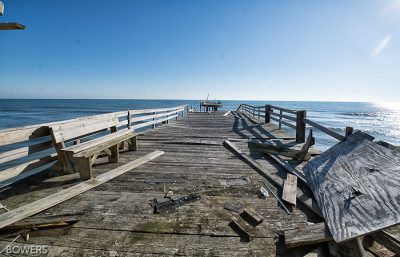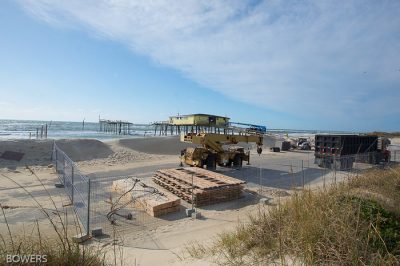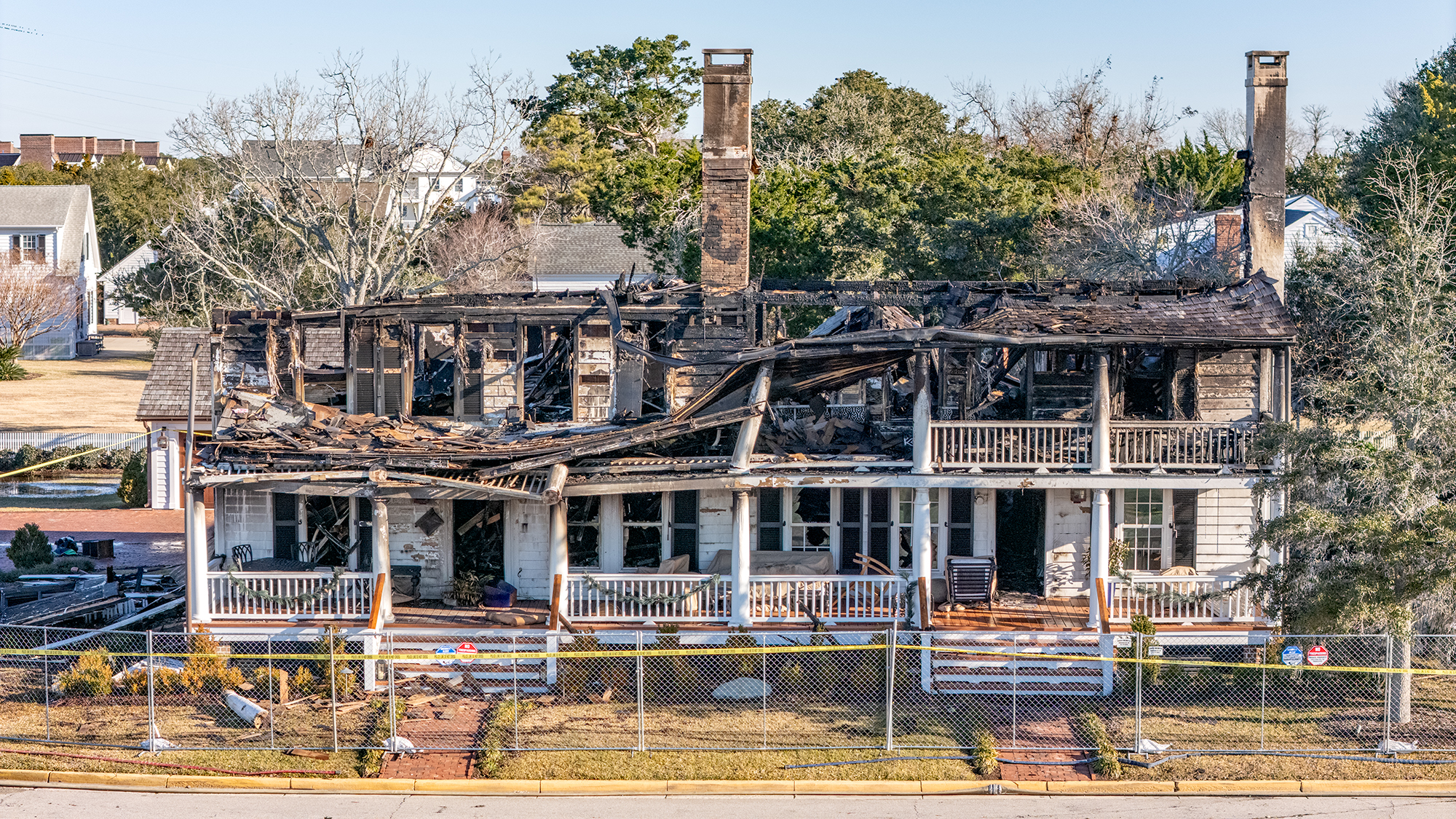
Reprinted from Island Free Press
The pier house at the Frisco Pier, also known as Cape Hatteras Pier, is underway – a project that will last just a few days to several weeks.
Supporter Spotlight
After the initial staging phase, which included asbestos abatement by a special contractor, inspections and securing the site with fencing, the removal portion of the project can now begin in earnest, starting with the pier house and working towards the visible pilings.
DOT Construction, which has worked with the National Park Service on several projects, is tackling the removal, which has presented several obstacles from the get go.
First, the pier needs to be dismantled without creating debris along the beach and in the water, and second, pilings that may be lodged 30 feet deep need to be fully removed to prevent future injury.
To tackle the potential debris issue, the crews are using small equipment like chainsaws to remove the visible components piece by piece, and take them away from the site.
“This way, we can minimize any debris flying around,” said Cary Huffman, facility operations specialist with the National Park Service.
Supporter Spotlight
For the pilings, diving teams will be enlisted to ensure each pilling is fully and completely removed from the site. This phase of the project is the most labor intensive, and is the most dependent on good weather conditions.
“All of the pilings below the water’s surface are not smooth – they are jagged and dangerous,” said Huffman, noting that leaving any portions of submerged pilings behind could create treacherous conditions for mariners, surfers, and swimmers in the future. “We need to make sure they are completely gone.”
Removal of all the visible elements of the pier will be a relatively quick process, but the diving team has to work with the wind and current conditions to proceed safely. Because of this, while it’s more likely than not that the project will be completed by the May 1, 2018 deadline, there may be unforeseen weather delays.
The Frisco Pier was built in 1960 but began to deteriorate in the 2000s. David Hallac, Cape Hatteras National Seashore Superintendent, said that in 2010 – before a barrage of subsequent storms – the cost to repair the pier would have been roughly $2 million dollars. At this point, with less than 150 feet of the original 600 ft. long pier remaining, (or less than 40 percent of the structure), the cost of rebuilding would be much higher.
It was safety concerns of debris both in the water and washing ashore that prompted the project, which was first proposed in 2013. And while the pier itself will completely disappear from the Frisco shoreline, the beach will continue to be a popular public access spot.
When the pier was operational, the parking lot and the road that led to the structure were both privately owned, however after the project is over, the parking lot and road will remain open to the public, and a future comfort station with restrooms – perhaps similar to the Bathhouse in Hatteras village – has already been proposed and is being considered.
“The silver lining is that we will be able to make the parking lot and the road accessible to everyone,” said Hallac.

In the meantime, the site will be barricaded during the duration of the project for safety as crews begin the slow and steady process of removing the pier from the landscape.
Today, with the tiles removed from the interior of the pier house, and just the bare floors, walls and ceilings remaining, the pier’s appearance is certainly a stark contrast to how it looked during its heyday, when it was one of the most popular fishing (and surfing spots) on the island.
Just a couple of windows in the pier house remain unbroken, and while there are still flashes of the old operating pier – like an intact counter, or the wide opening that leads out to the ocean – all the fixtures, equipment, and other elements that were intrinsically part of the pier are gone.
Eric Anderson of Harkers Island is the DOT Construction Superintendent of the project, and he says that the removal is a personally bittersweet experience.
“This is a project that hits close to home,” he said. “I have been surfing and fishing at this pier since 1979 [or] 1980, and it’s a shame to see it in disrepair. But she’ll go out as a pier that brought wonderful memories to myself and so many people, and not as the decayed structure that could hurt somebody’s [child.]”
“She will be missed.”
This story is provided courtesy of the Island Free Press, a digital newspaper covering Hatteras and Ocracoke islands. Coastal Review Online is partnering with the Free Press to provide readers with more environmental and lifestyle stories of interest along our coast.







